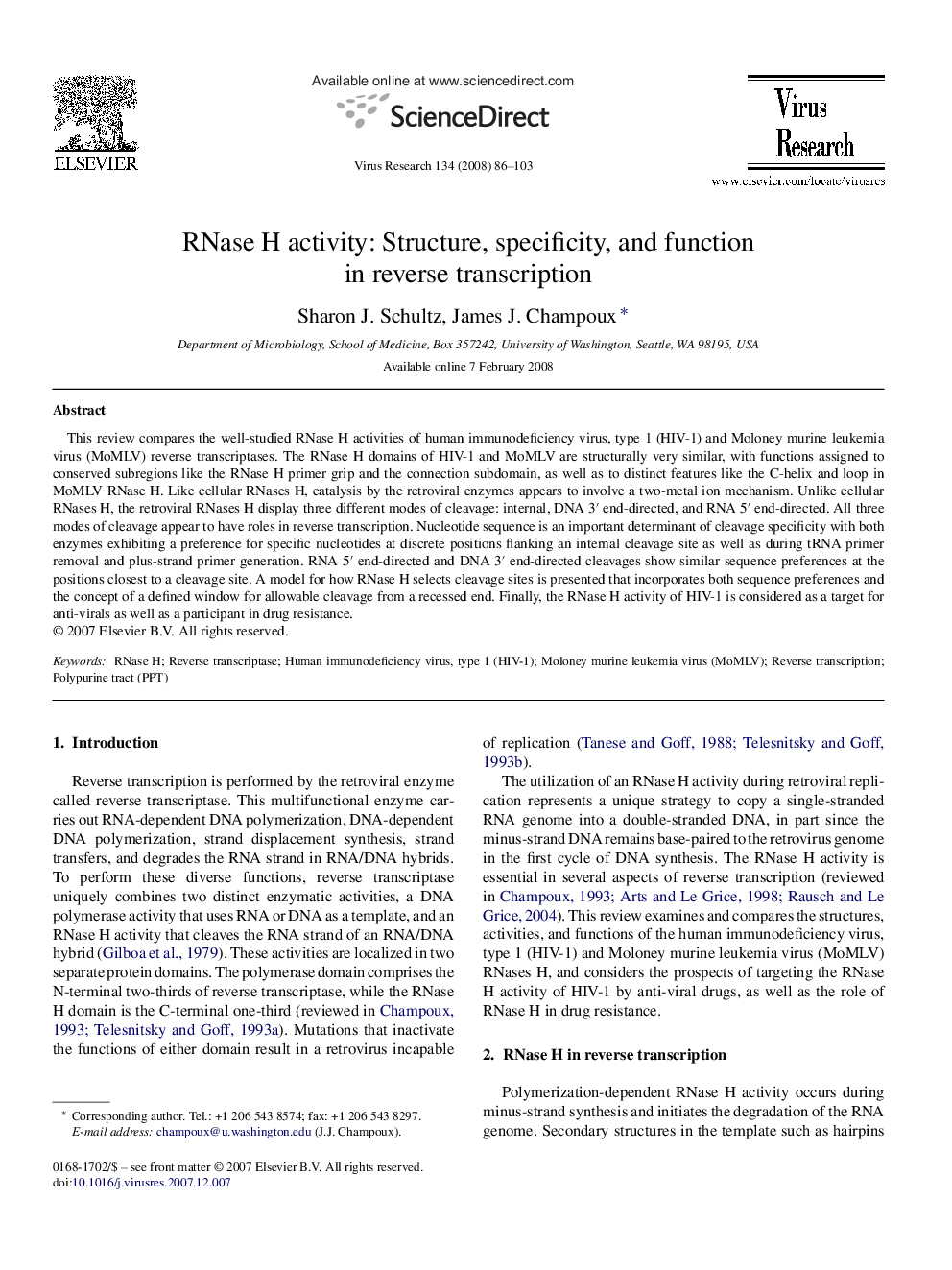| کد مقاله | کد نشریه | سال انتشار | مقاله انگلیسی | نسخه تمام متن |
|---|---|---|---|---|
| 3430289 | 1594400 | 2008 | 18 صفحه PDF | دانلود رایگان |

This review compares the well-studied RNase H activities of human immunodeficiency virus, type 1 (HIV-1) and Moloney murine leukemia virus (MoMLV) reverse transcriptases. The RNase H domains of HIV-1 and MoMLV are structurally very similar, with functions assigned to conserved subregions like the RNase H primer grip and the connection subdomain, as well as to distinct features like the C-helix and loop in MoMLV RNase H. Like cellular RNases H, catalysis by the retroviral enzymes appears to involve a two-metal ion mechanism. Unlike cellular RNases H, the retroviral RNases H display three different modes of cleavage: internal, DNA 3′ end-directed, and RNA 5′ end-directed. All three modes of cleavage appear to have roles in reverse transcription. Nucleotide sequence is an important determinant of cleavage specificity with both enzymes exhibiting a preference for specific nucleotides at discrete positions flanking an internal cleavage site as well as during tRNA primer removal and plus-strand primer generation. RNA 5′ end-directed and DNA 3′ end-directed cleavages show similar sequence preferences at the positions closest to a cleavage site. A model for how RNase H selects cleavage sites is presented that incorporates both sequence preferences and the concept of a defined window for allowable cleavage from a recessed end. Finally, the RNase H activity of HIV-1 is considered as a target for anti-virals as well as a participant in drug resistance.
Journal: Virus Research - Volume 134, Issues 1–2, June 2008, Pages 86–103